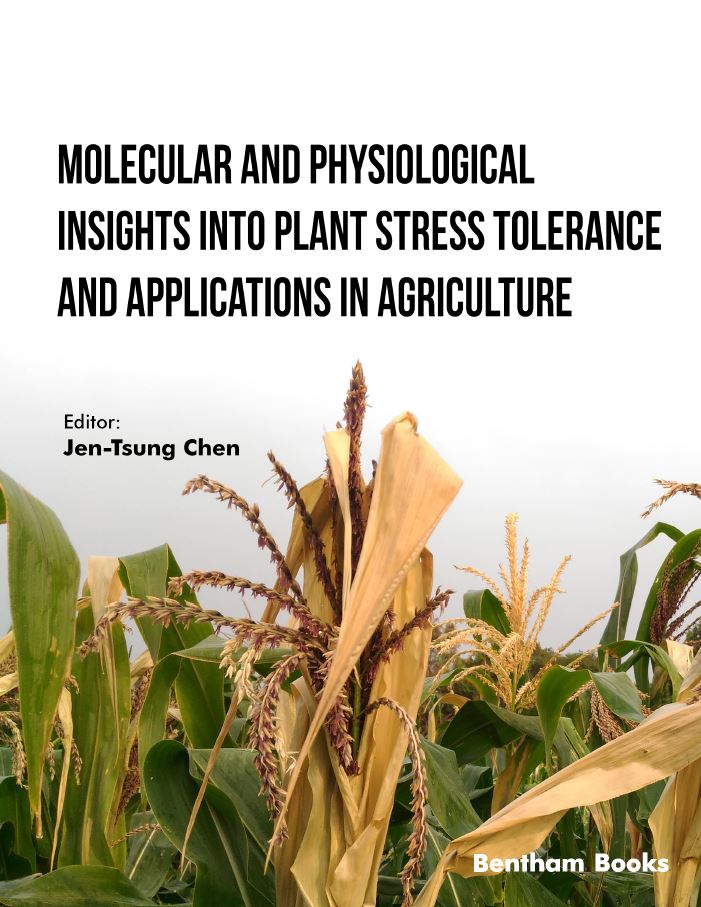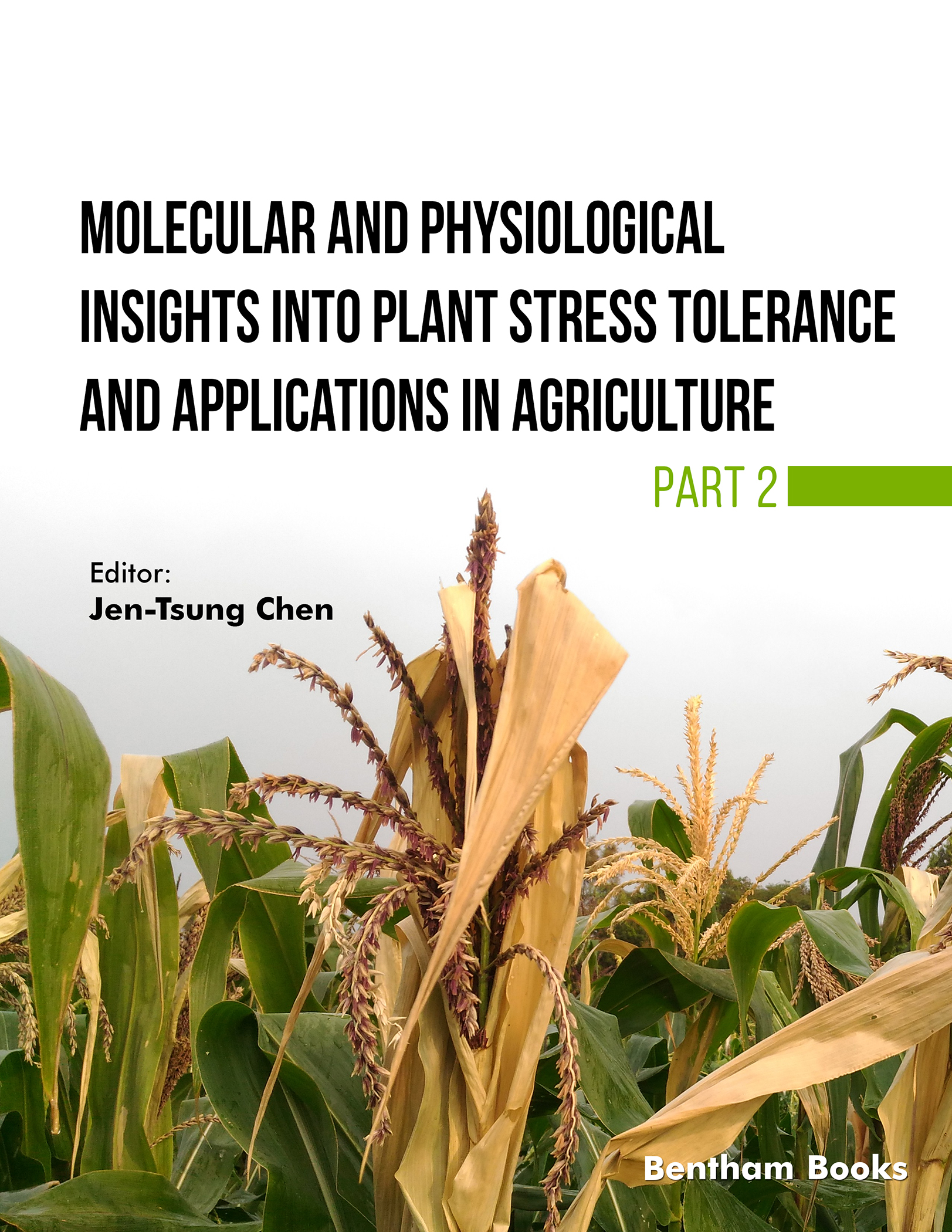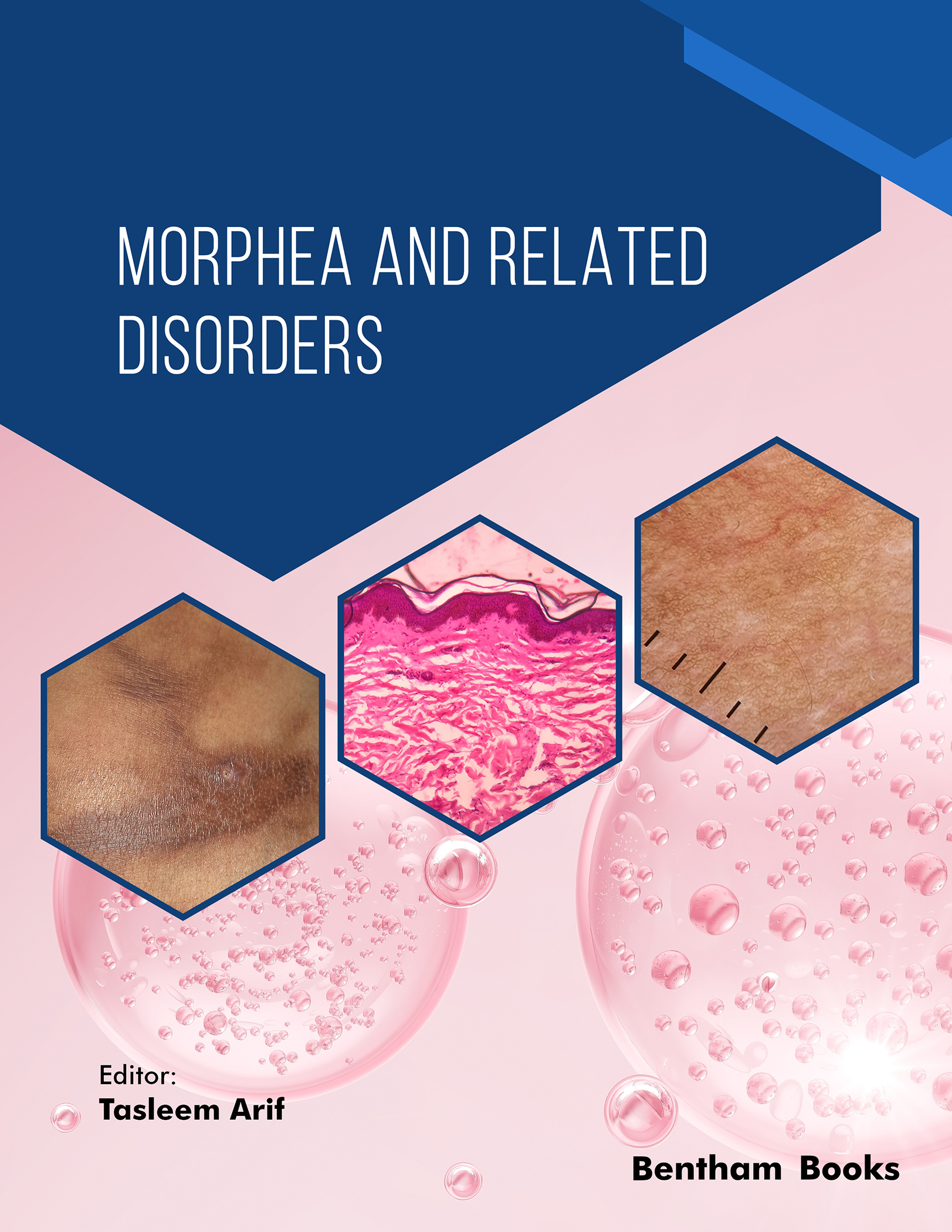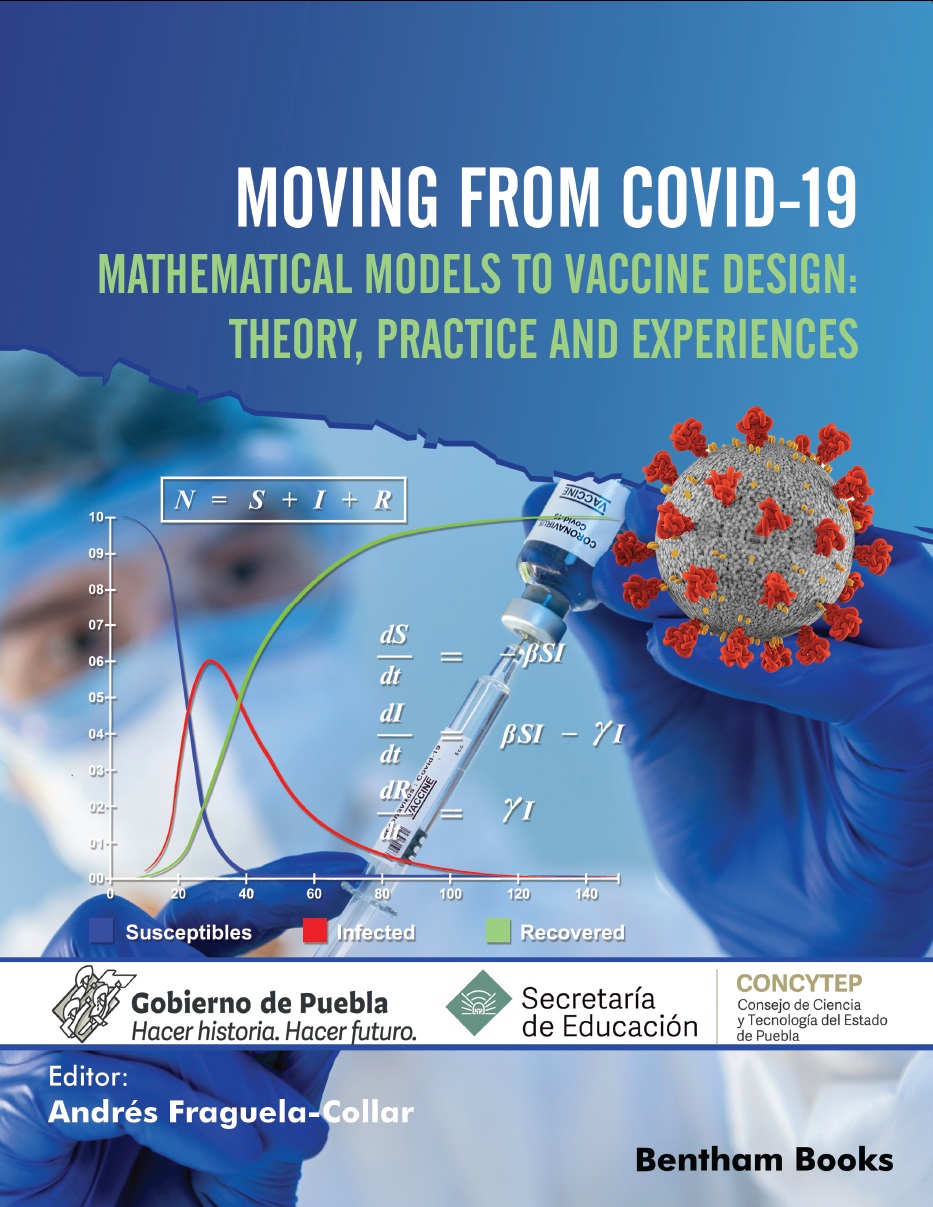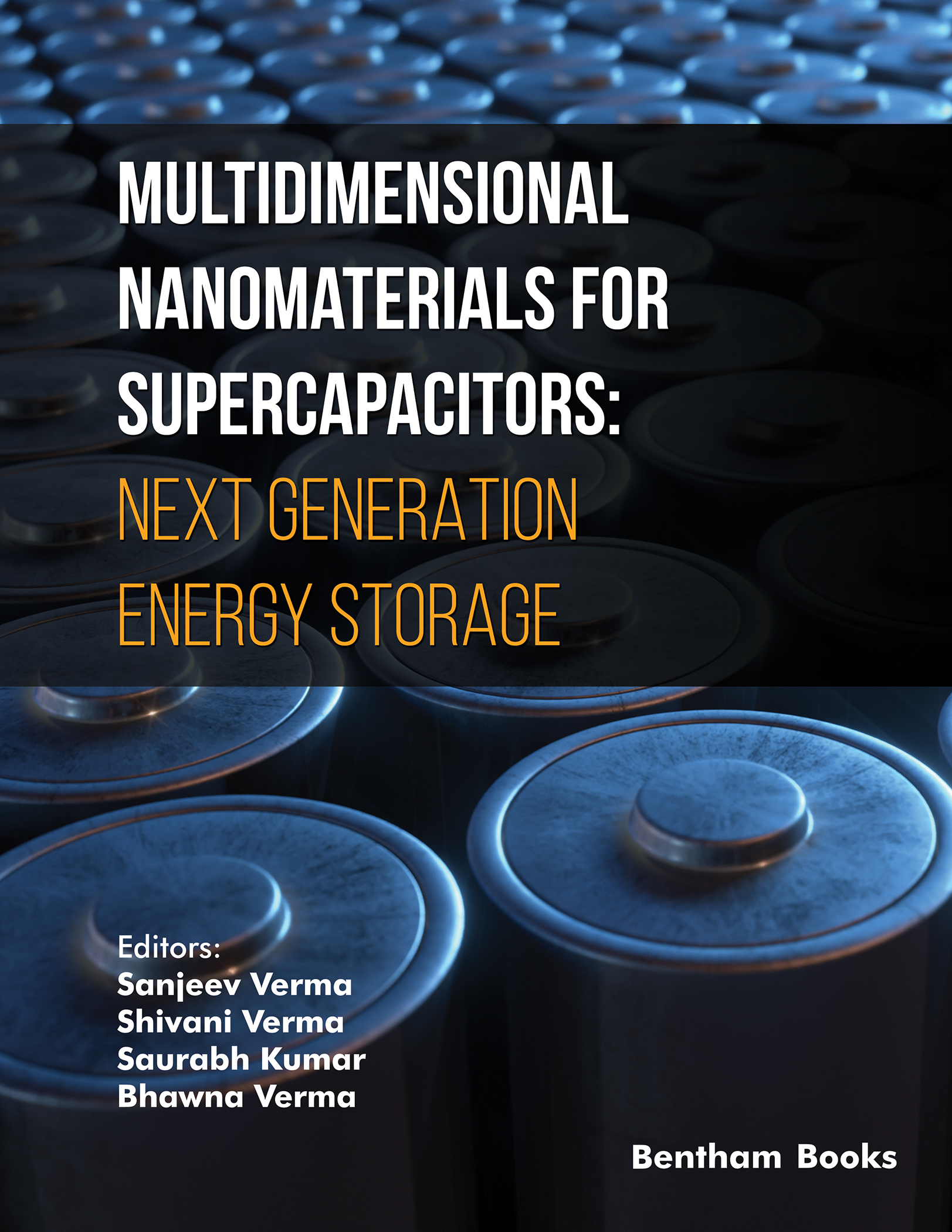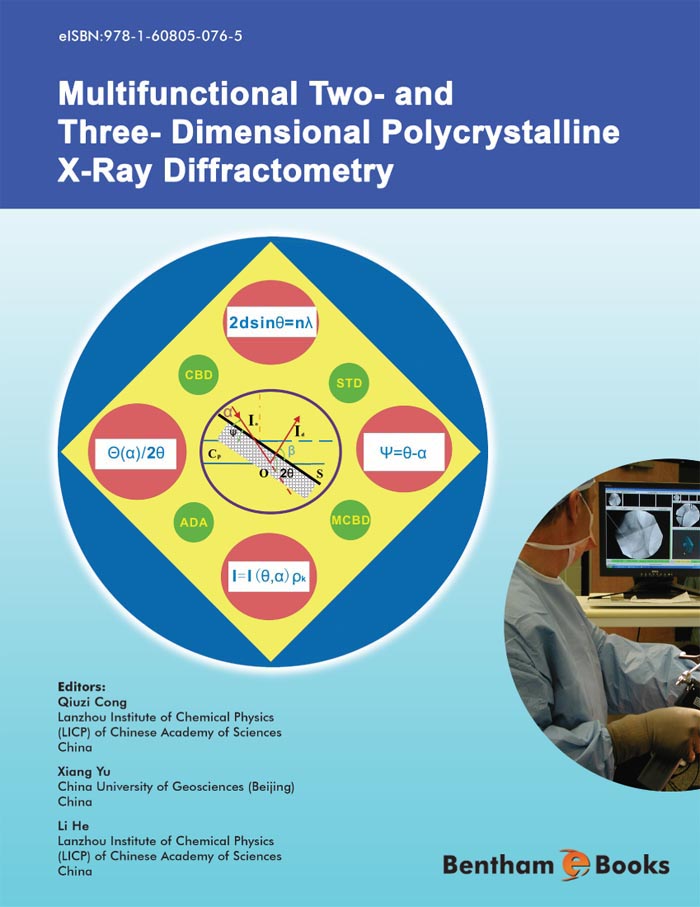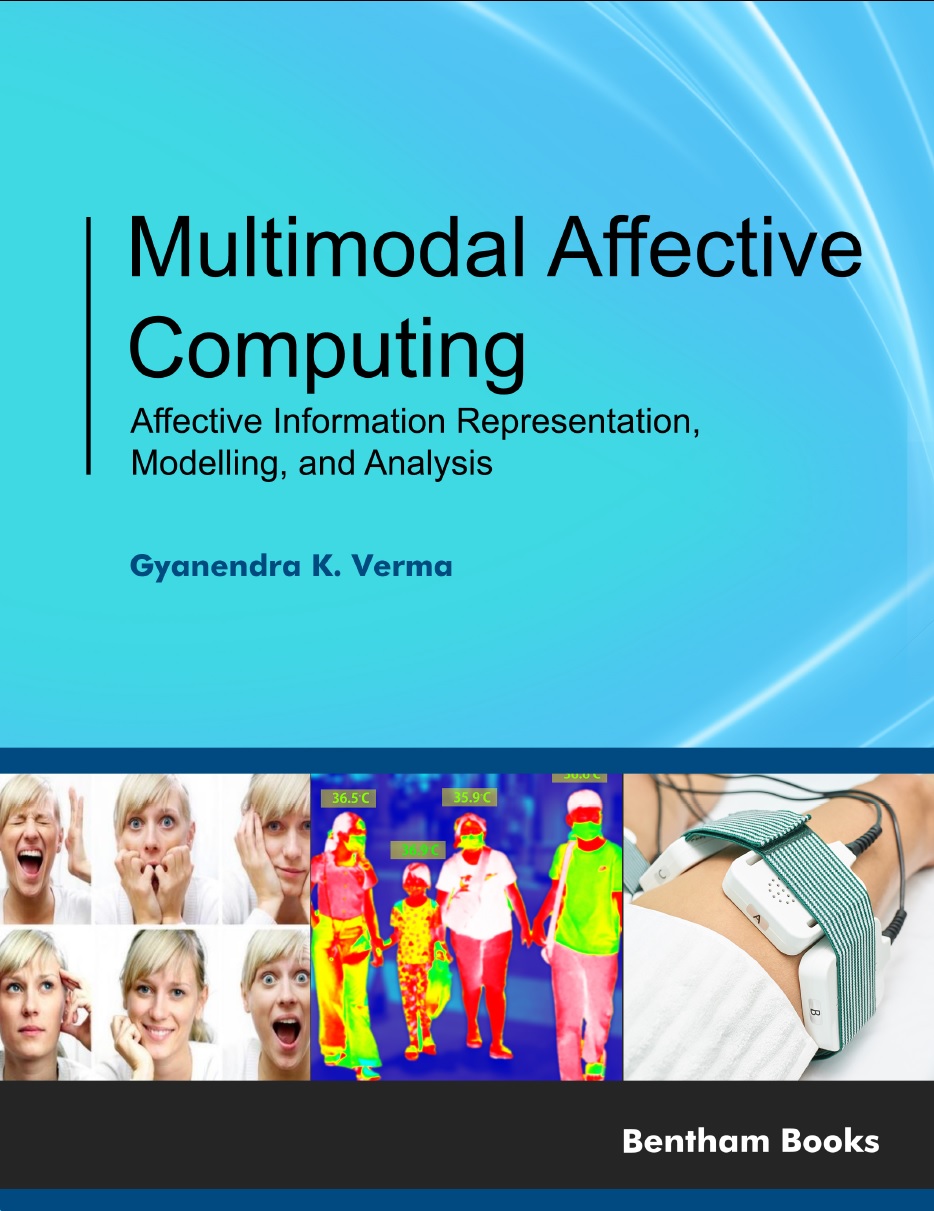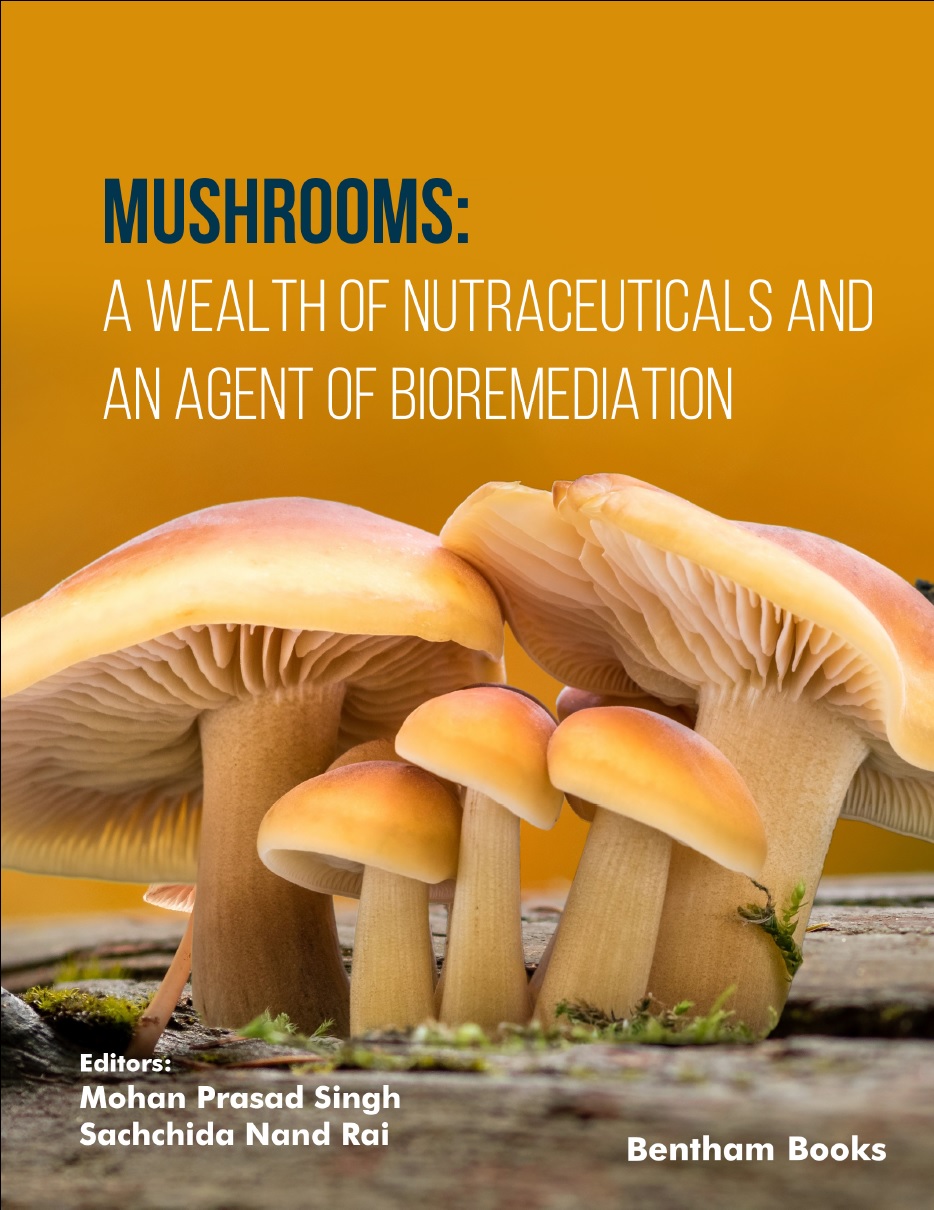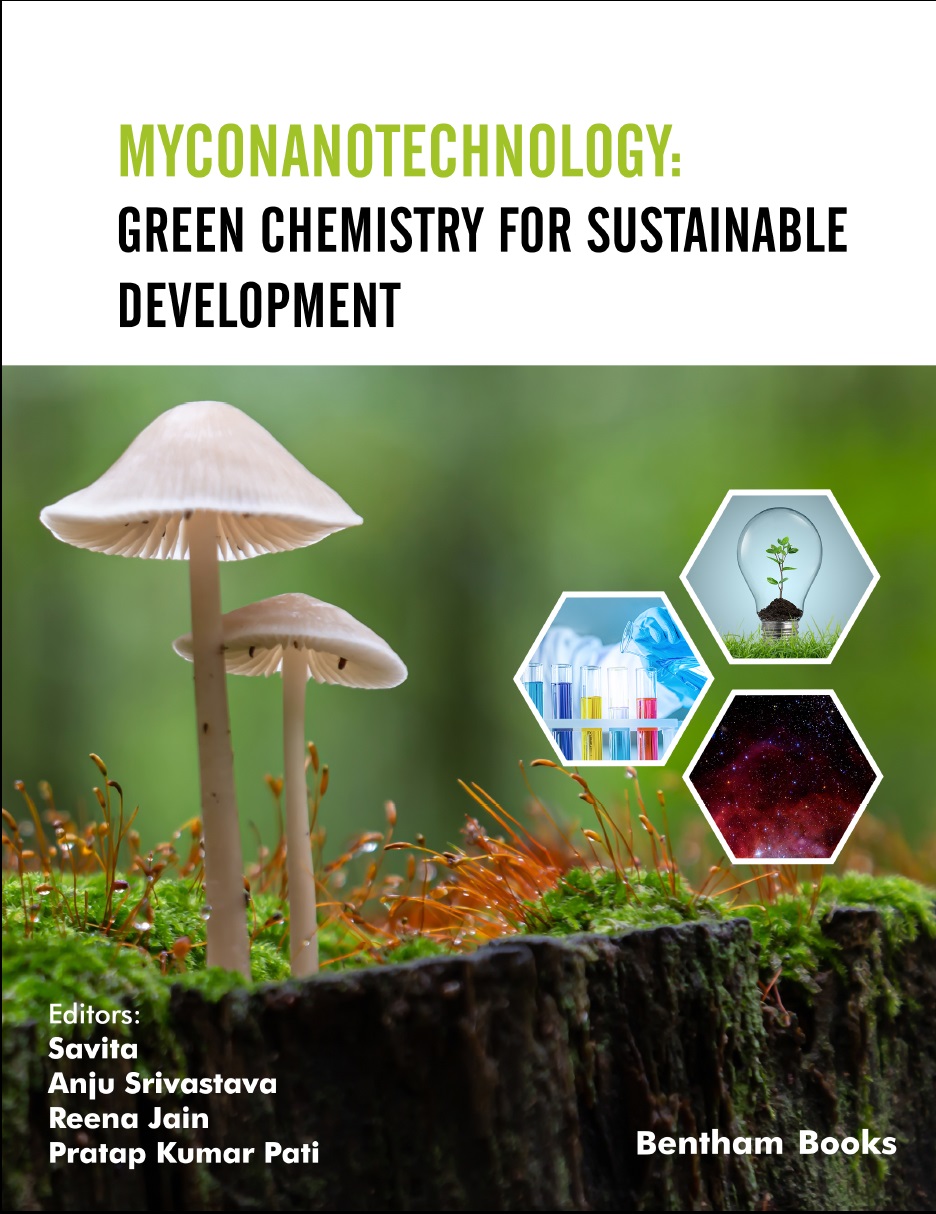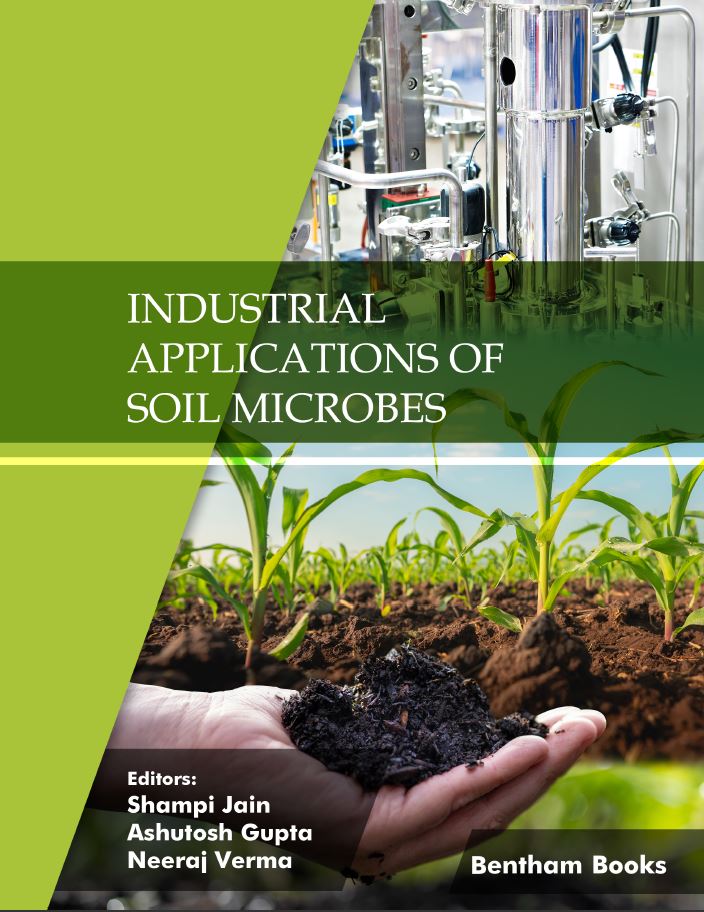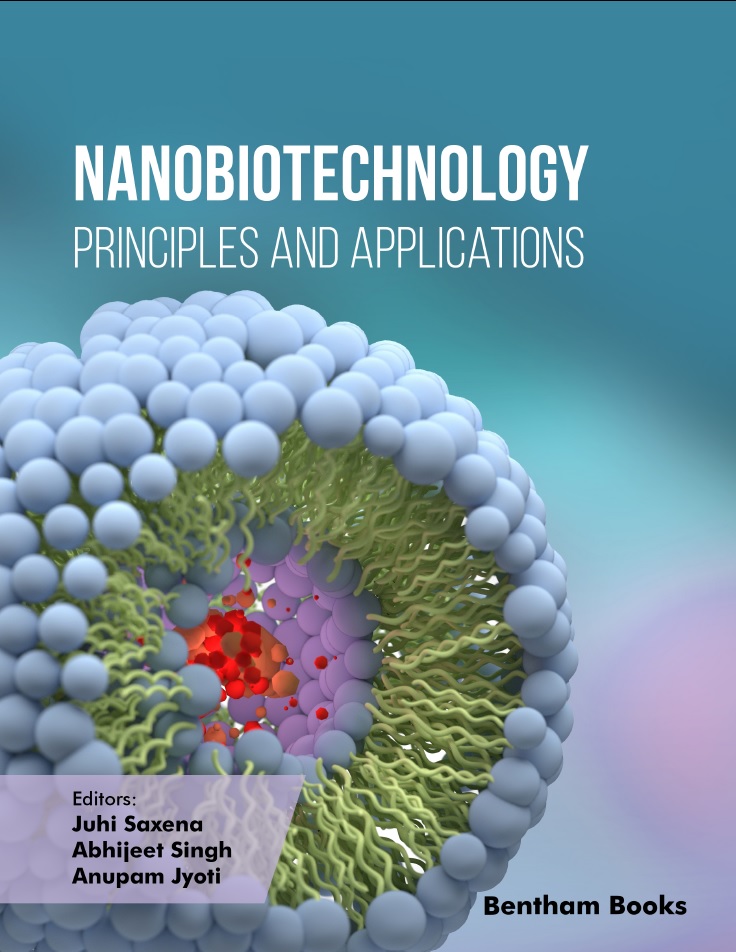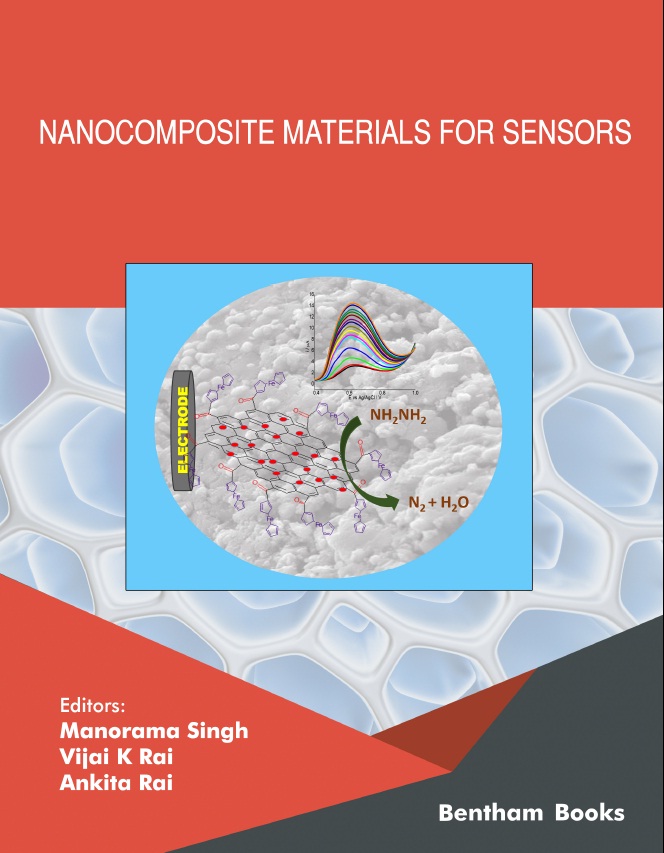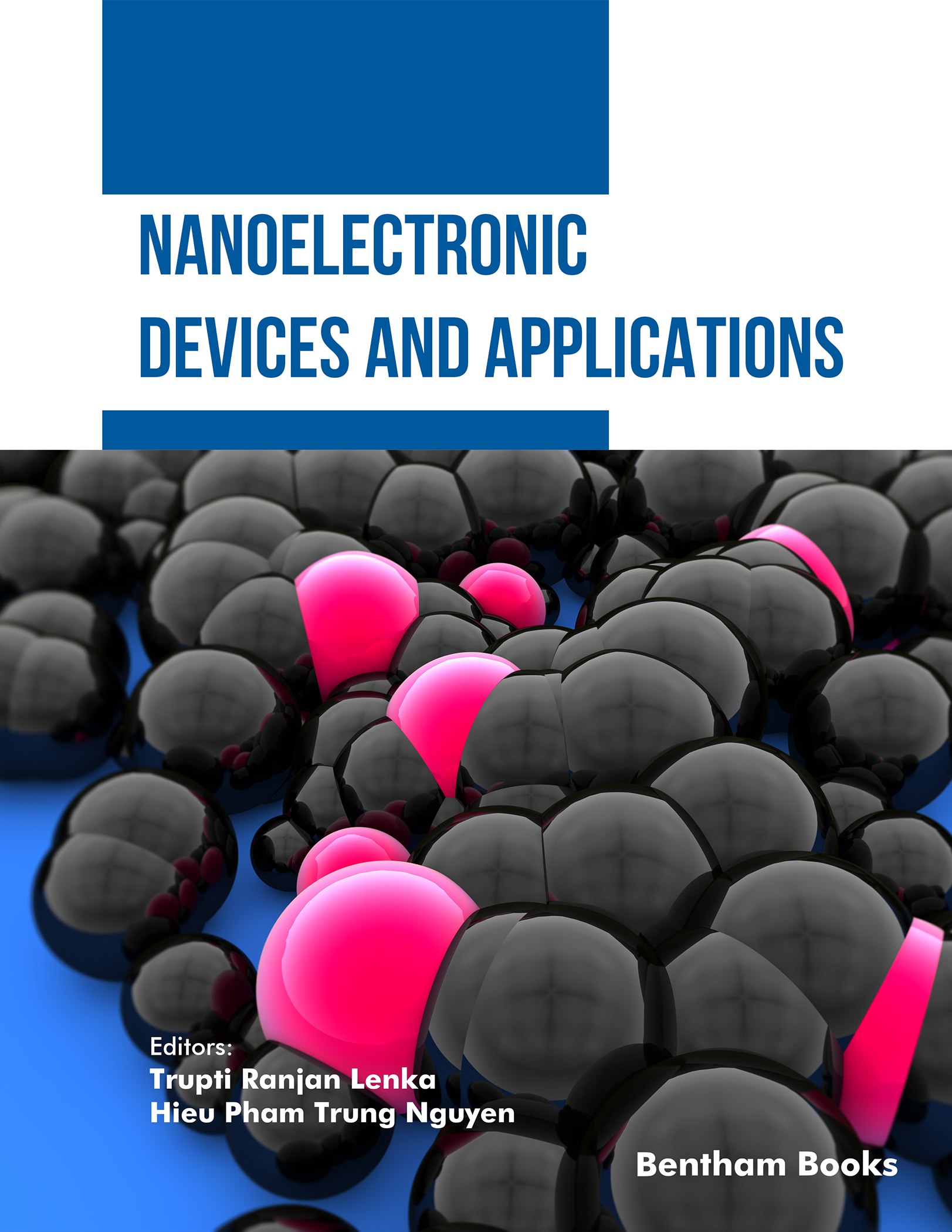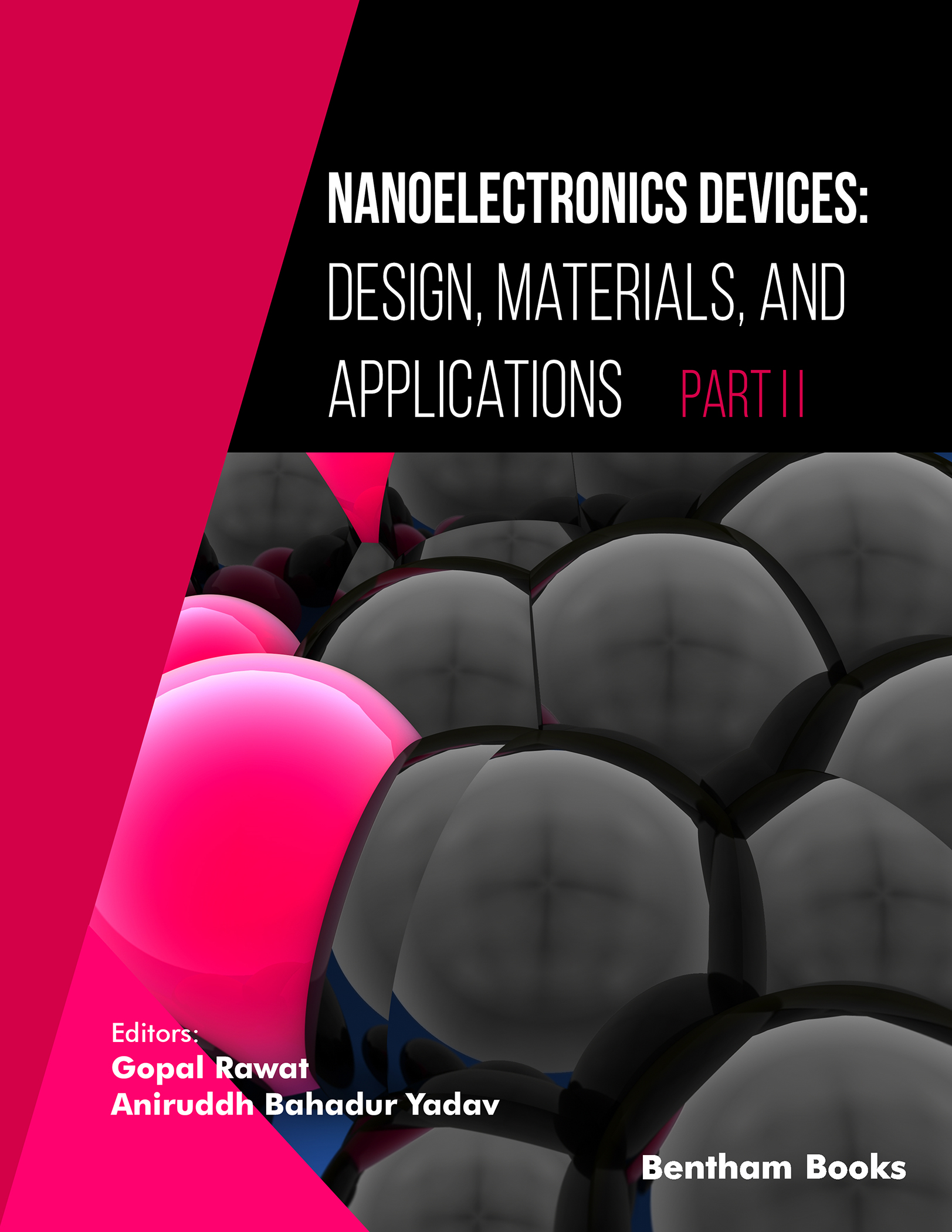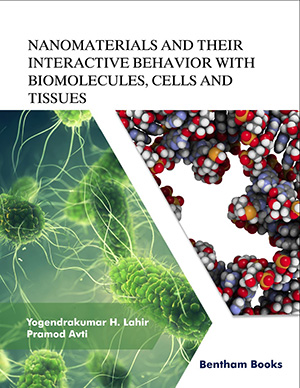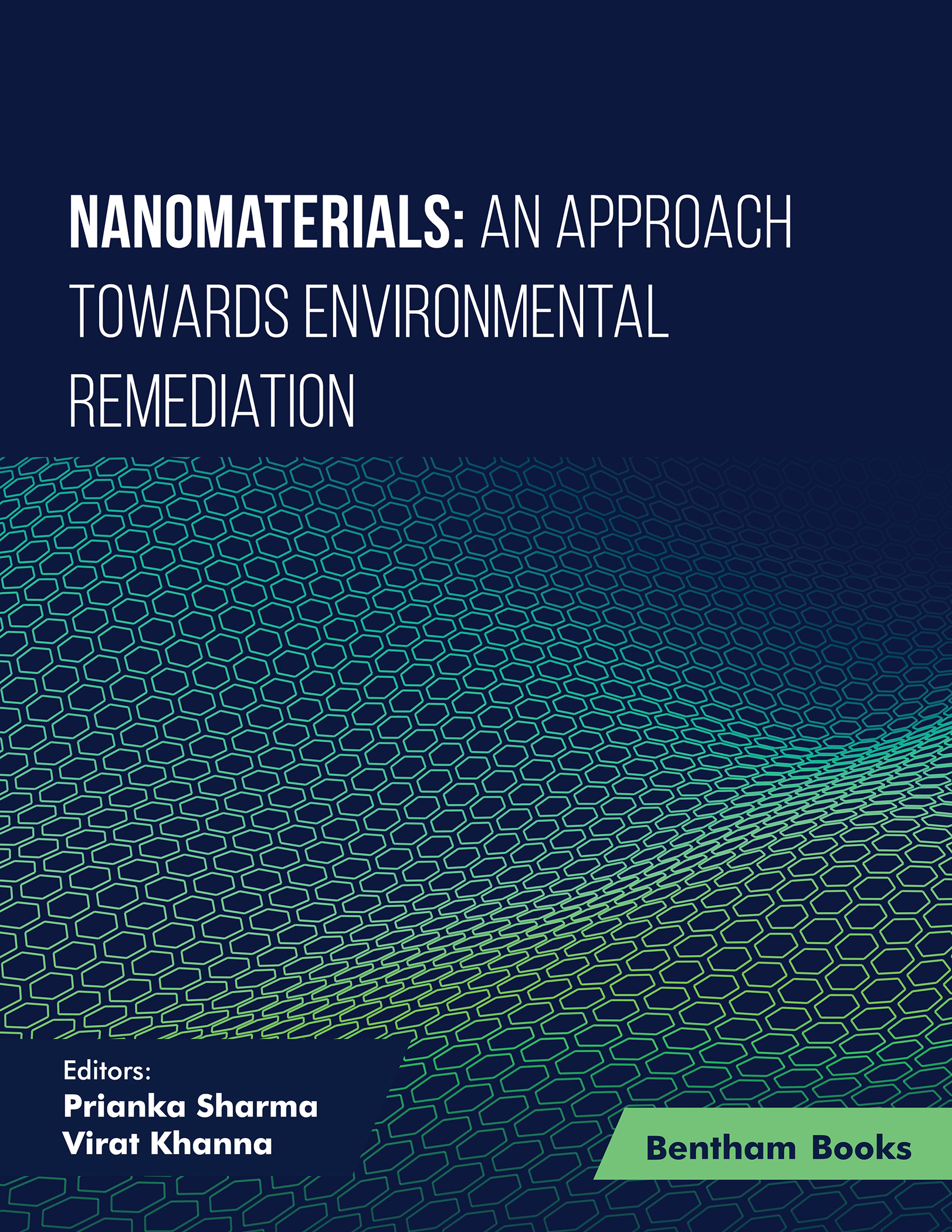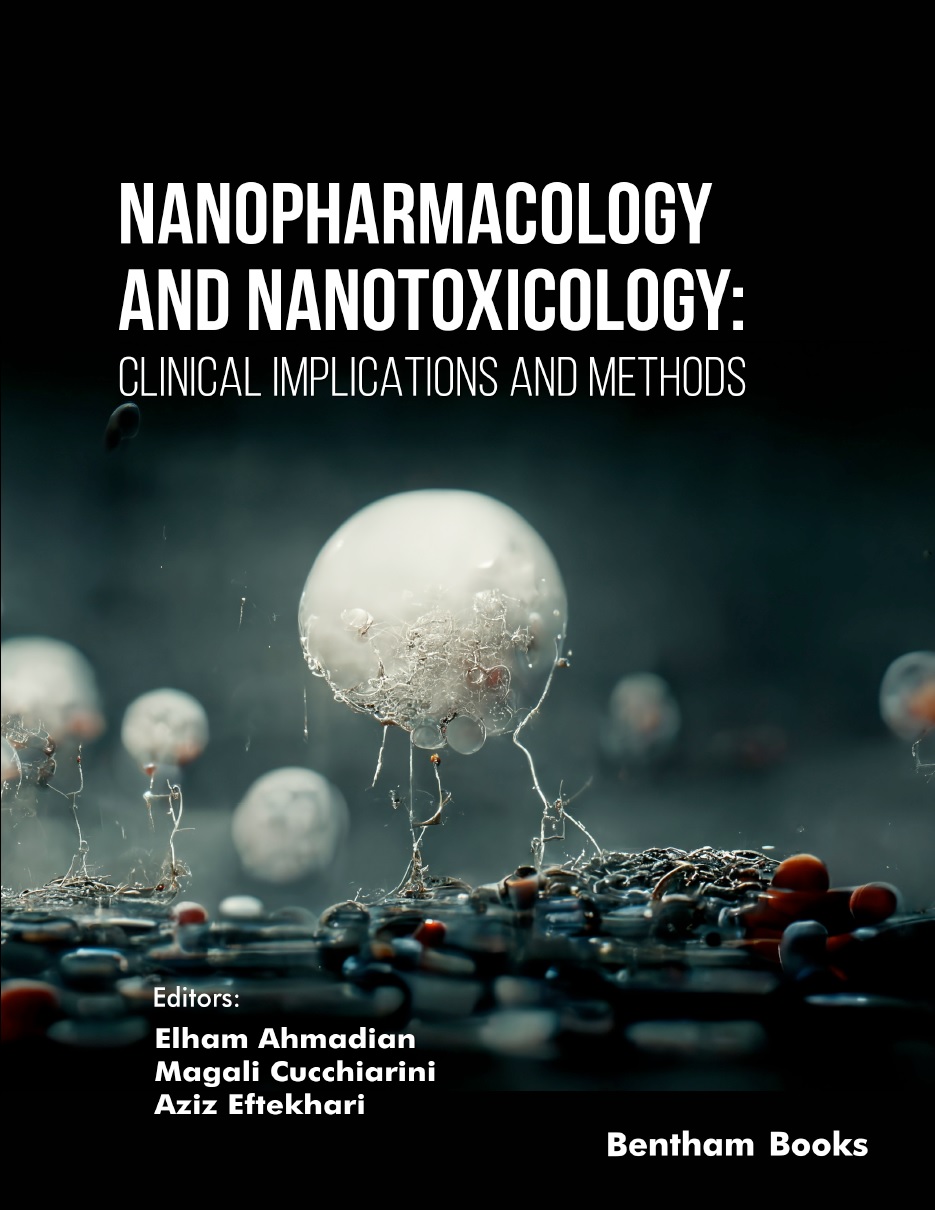- Home
- Publishers
- Bentham Science Publishers
Bentham Science Publishers
Bentham Science Publishers is a major publisher of more than 100 peer-reviewed science, technology and medical (STM) journals, along with a rapidly growing collection of eBooks. Since 1993, Bentham Science Publishers has been catering to the information needs of the pharmaceutical, engineering, biomedical and medical research community.541 - 560 of 812 results
-
-
Molecular and Physiological Insights into Plant Stress Tolerance and Applications in Agriculture
More LessMolecular and Physiological Insights into Plant Stress Tolerance and Applications in Agriculture is an edited volume that presents research on plant stress responses at both molecular and physiological levels. Key Features: - Emphasizes the morphological and physiological reactions of plants and the underlying molecular mechanisms when faced with stress from environmental or pathogenic factors. - Explores microbial dynamics within the plant rhizosphere and the application of plant growth-promoting bacteria as biofertilizers and endophytes as biocontrol agents to enhance crop growth and productivity for sustainable agriculture. - Systematically summarizes molecular mechanisms in plant stress tolerance and discusses the current applications of biotechnology, nanotechnology, and precision breeding to obtain stress-tolerant crops, contributing to climate-smart agriculture and global food security. - Includes contributions and references from multidisciplinary experts in plant stress physiology, plant molecular biology, plant biotechnology, agronomy, agriculture, nanotechnology, and environmental science. The content of the book is aimed at addressing UN SDG goals 2, 12, and 15 to achieve zero hunger and responsible consumption and production, and to sustainable use of terrestrial ecosystems, respectively. This comprehensive resource is suitable for researchers, students, teachers, agriculturists, and readers in plant science, and allied disciplines.
-
-
-
Molecular and Physiological Insights into Plant Stress Tolerance and Applications in Agriculture- Part 2
More LessMolecular and Physiological Insights into Plant Stress Tolerance and Applications in Agriculture Part 2 is an edited volume that presents research on plant stress responses at both molecular and physiological levels. This volume builds on the previous volume to provide additional knowledge in studies on the subject.
Key Features
- Explains aspects of plant genetics central to research such as the role of cytosine methylation and demethylation in plant stress responses, and the importance of epigenetic genetics in regulating plant stress responses.
- Explores how Late Embryogenesis Abundant proteins affect plant cellular stress tolerance with an emphasis on their molecular mechanisms and potential implications.
- Focuses on beneficial microorganisms including rhizobacteria, endophytes, and mycorrhizal fungi, which are expected to be alternative fertilizers with the advantages of being cost-effective, toxin-free, and eco-friendly.
- Highlights the potential use of endophytic bacteria for protecting crops against pathogens
- Presents an in-depth analysis of the molecular level to understand the impact of ATP-binding cassette transporters on plant defense mechanisms with a discussion of the potential anti-pathogenic agents based on terpenes and terpenoids.
The content of the book is aimed at addressing UN SDG goals 2, 12, and 15 to achieve zero hunger and responsible consumption and production, and to sustainable use of terrestrial ecosystems, respectively.
This comprehensive resource is suitable for researchers, students, teachers, agriculturists, and readers in plant science, and allied disciplines.
-
-
-
Morphea and Related Disorders
More LessMorphea and Related Disorders is a comprehensive reference on morphea. The book covers the subject in 20 chapters. The book starts with a detailed introduction and history of the morphea and its various classifications systems. Next, the book progresses into epidemiology, predisposing factors and pathogenic mechanisms, followed by histopathology for morphea diagnosis and a detailed review of clinical presentations.
Subsequent chapters cover associated diseases and extracutaneous manifestations, medical investigations, treatment guidelines and special topics (Idiopathic atrophoderma of Pasini and Pierini, Linear atrophoderma of Moulin, Parry-Romberg syndrome, Lichen sclerosus, pediatric morphea and eosinophilic fasciitis).
Key features:
-he most detailed reference book on morphea
-Easy and simple language for readers
-Chapter synopsis at the beginning of each chapter
-Learning points at the end of the chapter
-More than 100 high resolution colored photographs
-Information boxes and tables to enhance readability.
-Covers basic knowledge on morphea, including pathogenesis, clinical presentations, and classification
-Includes guidelines for professionals
-Includes chapters on special topics for advanced readers
Morphea and Related Disorders is the definitive reference book for medical students, residents, instructors, and physicians.
-
-
-
Moving From COVID-19 Mathematical Models to Vaccine Design: Theory, Practice and Experiences
More LessThis compendium represents a set of guides to understanding the challenging scientific, epidemiological, clinical, social, and economic phenomenon that is represented by the COVID-19 pandemic. The book explains the mathematical modeling of COVID-19 infection, with emphasis on traditional epidemiological principles. It represents a rigorous, comprehensive and multidisciplinary approach to a complex phenomenon. The chapters take into account the knowledge arising from different disciplines (epidemiology, pathophysiology, immunology, medicine, biology, vaccine development, etc.). It also covers COVID-19 data analysis, giving the reader a perspective of statistics and data science, and includes a discussion about social and economic issues of the pandemic. Each chapter is devoted to a specific topic, and is contributed by experts in epidemiology.
Because of its multidisciplinary nature, this book is intended as a reference on mathematical models and basic immunotherapy for COVID-19 for a broad community of readers, from scholars who have scientific training, to general readers who have an interest in the disease.
-
-
-
Multidimensional Nanomaterials for Supercapacitors: Next Generation Energy Storage
More LessMultidimensional Nanomaterials for Supercapacitors: Next Generation Energy Storage explores the cutting-edge advancements in multidimensional nanomaterials for supercapacitor applications, addressing key techniques, challenges, and future prospects in the field. The book offers a comprehensive overview of the fundamentals of supercapacitors, including electrode materials, electrolytes, charge storage mechanisms, and performance metrics.
Key Features
Comprehensive Coverage: 15 referenced chapters cover a wide range of topics, including graphene derivatives, quantum dots, MOFs, MXenes, and fiber-shaped supercapacitors, providing a holistic view of the field.
Cutting-Edge Techniques: Covers the latest advancements in multidimensional nanomaterials for supercapacitors, providing insights into their synthesis, properties, and applications.
Future Applications: Chapters explore the potential future applications of nanomaterials in energy storage devices, offering valuable insights for researchers and practitioners.
Real-World Case Studies: Practical examples and case studies illustrate the application of nanomaterials in supercapacitors, enhancing understanding and applicability.
Challenges and Opportunities: Highlights the challenges and limitations associated with nanomaterial-based supercapacitors, offering information into overcoming barriers and expanding possibilities for future research.
-
-
-
Multidisciplinary Interventions for People with Diverse Needs - A Training Guide for Teachers, Students, and Professionals
More LessMultidisciplinary Interventions for People with Diverse Needs is a book written from an interdisciplinary perspective with the objective of helping readers to understand the problems faced by people with special needs.
Key Features:
- provides an updated theoretical and contextual foundation of medical issues
- provides information about the meaning, evaluation and intervention of the problems related to a variety of debilitating diseases and disability conditions (dementia, language disorders, diabetes, alterations of consciousness, celiac disease and disability in general)
- contains an accessible, well written, didactic text which is useful to both students and working professionals
The book equips the reader with information about different approaches to medical and social issues that arise when dealing with persons who are experiencing some degree of disability. For teachers and working professionals, the handbook serves as a guide for teaching, for the development of the structure of training courses, for the design of evaluation models and intervention of the topics addressed in the book.
The combination of information about the professional and human aspects of special needs education makes this book a useful reference for pedagogues, psychologists, students, teachers and professionals involved in social science, healthcare, and sports medicine, among other fields.
-
-
-
Multifunctional Two- and Three-Dimensional Polycrystalline X-Ray Diffractometry
More LessA novel X-ray diffraction (XRD) theory is intensively revealed in this book. The theory will extend present XRD view from one dimension to two and three dimensions, enabling readers to see the invisible characteristics inside materials. The two-dimension (2D) theory involves two angular variables of the Bragg angle Θ and the angle α, introduced to show the location of sample with respect to incident X-ray beam. Such variables are used to compose a set of general mathematical models, which include a general diffraction intensity equation, an azimuth-angle equation and a common scan mode, as well as the Bragg equation, for both of the surface-and transmission-reflection treatments. This book stresses upon the X-ray analyses for natural and synthetic materials. This book is dedicated to create a bridge between basic texts and specialist works and should be helpful to scholars studying XRD theory.
-
-
-
Multimodal Affective Computing: Affective Information Representation, Modelling, and Analysis
More LessAffective computing is an emerging field situated at the intersection of artificial intelligence and behavioral science. Affective computing refers to studying and developing systems that recognize, interpret, process, and simulate human emotions. It has recently seen significant advances from exploratory studies to real-world applications.
Multimodal Affective Computing offers readers a concise overview of the state-of-the-art and emerging themes in affective computing, including a comprehensive review of the existing approaches in applied affective computing systems and social signal processing. It covers affective facial expression and recognition, affective body expression and recognition, affective speech processing, affective text, and dialogue processing, recognizing affect using physiological measures, computational models of emotion and theoretical foundations, and affective sound and music processing.
This book identifies future directions for the field and summarizes a set of guidelines for developing next-generation affective computing systems that are effective, safe, and human-centered.The book is an informative resource for academicians, professionals, researchers, and students at engineering and medical institutions working in the areas of applied affective computing, sentiment analysis, and emotion recognition.
-
-
-
Multistage Interconnection Network Design for Engineers
More LessThis textbook provides a quick and easy understanding of multistage interconnection networks (MINs) for engineers. The book contents focus on the design, performance metrics, and evaluation of these networks which are crucial in modern computer architecture. The contents equip engineering students, apprentices and professionals with in-depth knowledge and analysis of MINS, enabling them to build complex computer architectures for efficient data communications and cost effective solutions for circuit design. The book starts with an introduction to MINS and subsequently progresses to the evaluation of a range of MINS (SEN, Gamma-Minus, FTSN, FTGN, SEGIN). Key highlights of the book include: & Easy to understand notes on design, reliability and fault tolerance & Covers a wide range of MIN types with notes on design variants & Supplementary information aiding comprehension of the main content. & A curated list of references for further exploration and deeper understanding.
-
-
-
Mushrooms: A Wealth of Nutraceuticals and An Agent of Bioremediation
More LessMushrooms: A Wealth of Nutraceuticals and An Agent of Bioremediation informs readers about the growing role of mycotherapy and fungal biotechnology for a sustainable future. It presents reviews of efficient treatment strategies for different diseases with the help of mushrooms and derived nutraceuticals. This book also highlights efficient bioremediation strategies exhibited by common mushrooms. Starting with topics on the nutritional and medicinal values of various edible and non-edible mushrooms, the contributors explore their bioactive components. The book progressively covers the antidiabetic, anticancer and antimcrobial potential of mushrooms. The contents are rounded up by reviews of the application of fungal xylanase enzymes and bioremediation of heavy metals from the environment. This is a comprehensive reference for researchers interested in working in the field of applied mycology for nutraceuticals and environmental bioremediation for pollution control.
-
-
-
Myconanotechnology: Green CheSouth American Faunamistry for Sustainable Development
Mycology: Current and Future Developments: Volume 3
More LessMyconanotechnology is the interface between mycology and nanotechnology. In other words, myconanotechnology represents the green synthesis of nanoparticles using fungi. The field is recently gaining attention due to the simple, resource efficient, and ecofriendly nature of fungal biotechnology. Therefore, Myconanotechnology is at the core of cost-effective and sustainable solutions for many industrial processes.
This volume provides readers at all academic levels with a broad background on some of the fastest developing areas in myconanotechnology. It is organised into two sections, A and B. Section A updates readers on several cutting-edge aspects of the synthesis and characterization of nanoparticles through the use of fungi. Section B describes applications of myconanotechnology including: the management of bacterial and fungal diseases, pest control, among other applications in medicine and agriculture. The breadth of topics covered in the contents make this volume an informative resource on the field. Contributions are written by experts in industrial biotechnology, and include extensive references to published studies.
This book is a timely reference for researchers, teachers and students, and all readers who are interested in new developments in industrial mycology and nanotechnology.
-
-
-
Nano Materials Induced Removal of Textile Dyes from Waste Water
More LessNanotechnology has progressed to the point where it can mimic natural systems such as porous membranes or the structure of leaves. Technological advances have resulted in a boom in the use of nanotechnology in different areas of engineering, including water purification systems. This book explores nanomaterials used for removing various textile dyes from water. It compiles 8 chapters that discuss the materials and nano systems used in these processes.
This reference is designed to provide answers to common questions for scholars, academicians and technologists about fundamentals of nanoscience and nanomaterial induced removal of textile dyes. College students (physics, chemistry and materials science, engineering) will be able to easily understand the subject matter.
Key Features:
- Covers the basics of nano systems, from synthesis to applications
- Explains the basics of nanomaterial behavior and characterization
- Describes the classifications of dyes - Explains the interactions nanomaterials with different dyes
- Explains the reaction mechanisms of photocatalysis and the kinetics behind adsorption
- two important methods for removing dyes from water
- Discusses nano systems that are useful for textile dye removal from water. 3 types of nano systems are included: carbon based, oxide based, polymer based or nitride based systems - Includes references for further reading
- Simple presentation for easy and quick understanding of the subject
-
-
-
Nanobiotechnology: Principles and Applications
More LessNanobiotechnology is the application of nanotechnology in biological fields. Nanobiotechnology is a multidisciplinary field that currently engages researchers in conventional as well as advanced avenues of engineering and natural sciences.The recent developments in nanobiotechnology have impacted various socio-economic sectors, including medical, agriculture, food, textile, and other industries. Although the integration of nanomaterials with biology has led to the development of diagnostic devices, contrast agents, analytical tools, therapy, and drug-delivery vehicles, bionanotechnology research is still in its infancy. The full potential of developments in this field have yet to be realized.
This book discusses various nano-engineered materials or nanocarriers that are used in different situations. It presents 8 chapters that cover the application of nanobiomaterials in environmental remediation, nanofertilisers, nanobiotics against antimicrobial resistance, nanobiosensors in pathogen detection, and nanotoxicity assessments. Each chapter is structured into easy-to-read sections that explain fundamental and applied concepts of nanobiomaterials. Readers will gain a current view of the biotechnological application of modern nanomaterials and nanoparticles. The book is intended to be a primer for students and researchers in agriculture, biotechnology, and biomedical engineering courses.
-
-
-
Nanocomposite Materials for Sensors
Current and Future Developments in Nanomaterials and Carbon Nanotubes: Volume 2
More LessThis reference reviews the reported literature on new approaches of nanocomposite material preparation and their applications in the development of physical, chemical, electrochemical, biological, fluorescence and colorimetric sensors. Sensor nanomaterials have been extensively used to amplify signals in the detection of a range of chemicals including toxic gases, biochemical nutrients, ions, explosives, pesticides and drugs to name a few. 14 chapter contributions highlight state-of-the-art sensors in recent years by outlining the synthesis, role and progress of nanocomposite materials in fabricating flexible and multifunctional sensing platforms in sensor technologies.
Chapters first introduce the reader to nanocomposite materials and their role in making a wide array of sensors including metal-organic, graphene-based and polymeric sensors. The chapters then progress into applications of sensors for the detection of chemicals such as blood glucose, heavy metal and other toxic ions, hydrazine, humidity and explosive. Each chapter explains the required materials for electrodes and material components for a specific sensor platform with additional information about sample collection, threshold values and perspectives where appropriate.
The book is intended as a compilation of knowledge for designing novel nanocomposite materials to be used as sensing platforms in sensor technologies. It serves as an informative resource for a broad range of readers including graduates and post-graduates, Ph. D. scholars, faculty members and professionals working in the area of material science, the healthcare industry, biological sciences, medical sciences, and environmental sciences.
-
-
-
Nanoelectronic Devices and Applications
More LessNanoelectronic Devices and Applications presents reviews on recent advances in nanoelectronic device design and new directions for their practical use. The volume includes 16 edited chapters that cover novel material systems, band engineering, modelling and simulations, fabrication and characterization techniques, and their emerging applications. The discussions presented in this book are based on current understandings on innovations and future trends, and references are provided for advanced scholars.
Chapter 1 presents an overview of recent innovations and future prospects in III-nitride semiconductor technologies for RF, power, digital and quantum applications. Chapter 2 reports new trends in GaN-based optical devices for sensing and micro-display applications. Chapter 3 shows current interests in nanophosphors and their utilizations in improving device performance of InGaN nanowire light-emitting diodes (LEDs). Recent studies on the effect of potential profile on the carrier transport in AlGaAs based double quantum well structures and their applications are presented in Chapter 4. The recent progress in high-electron-mobility transistors (HEMTs) is presented through Chapters 5, 6, and 7.
A comprehensive review on β-Ga2O3 emphasizing material properties, growth approaches, and its applications for next-generation high-power nanoelectronics; the effect of dielectric layers on the characteristics of AlN/β-Ga2O3 HEMTs are presented in Chapter 8 and 9 respectively. Chapters 10-14 summarize the recent studies in field-effect transistors (FETs) adopting different materials and structures. Chapter 15 presents current research in 2D Tungsten Diselenide (WSe2) with special focus on the material properties, device structures, applications, and challenges. Finally, Chapter 16 presents a systematic review of memristors, and memristive semiconductor devices.
The book is intended as a primary resource for elective subjects in advanced electronics and computer engineering courses at university level. Researchers and industry professionals will also learn about emerging trends and state-of-the-art research in nanoelectronics.
-
-
-
Nanoelectronics Devices: Design, Materials, and Applications - Part 2
More LessNanoelectronics Devices: Design, Materials, and Applications provides information about the progress of nanomaterial and nanoelectronic devices and their applications in diverse fields (including semiconductor electronics, biomedical engineering, energy production and agriculture). The book is divided into two parts. The editors have included a blend of basic and advanced information with references to current research. The book is intended as an update for researchers and industry professionals in the field of electronics and nanotechnology. It can also serve as a reference book for students taking advanced courses in electronics and technology. The editors have included MCQs for evaluating the readers’ understanding of the topics covered in the book. Topics Covered in Part 2 include applications of nanoelectronics for different devices and materials. - Photonic crystal waveguide geometry - 8kW to 80kW power grids with simple energy storage systems - Two-dimensional material and based heterojunctions like MoS2 /graphene, MoS2 /CNT, and MoS2 /WS2, - 5G communication material - Wearable devices like electronic skin, intelligent wound bandages, tattoo-based electrochemical sensors - PEDOT: PSS-based EEG - New materials for medicine
-
-
-
Nanomaterials and Their Interactive Behavior with Biomolecules, Cells and Tissues
More LessNanoscience is a multidisciplinary area of science which enables researchers to create tools that help in understanding the mechanisms related to the interactions between nanomaterials and biomolecules (nanotechnology). Nanomaterials represent nanotechnology products. These products have an enormous impact on technical industries and the quality of human life. Nanomaterials directly or indirectly have to interact with biosystems. It is, therefore, essential to understand the beneficial and harmful interactions of nanomaterials with and within a biosystem, especially with reference to humans.
This book provides primary and advanced information concerning the interactions between nanomaterials and the components of a typical biosystem to readers. Chapters in the book cover, in a topic-based approach, the many facets of nanomolecular interactions with biological molecules and systems that influence their behavior, bioavailability and biocompatibility (including nucleic acids, cell membranes, tissues, enzymes and antibodies). A note on the applications of nanomaterials is also presented in the conclusion of the book to illustrate the usefulness of this class of materials.
The contents of the book will benefit students, researchers, and technicians involved in the fields of biological sciences, such as cell biology, medicine, molecular biology, food technology, cosmetology, pharmacology, biotechnology, and environmental sciences. The book also provides information for the material science personnel, enabling them to understand the basics of target-oriented nanomaterials design for specific objectives.
-
-
-
Nanomaterials: An Approach Towards Environmental Remediation
More LessThis book explains various methods needed to overcome the challenges faced during environmental remediation with a focus on nanotechnology. The book comprises ten edited chapters that aim to inform and educate readers about recent technologies that are beneficial for pollution control.
Starting with an introduction to environmental remediation, the book covers innovative nanomaterials including spinel nanoferrites, carbonaceous quantum dots, carbon nanotubes and nanobioadsorbents. In addition to highlighting the environmental benefits of these materials, the book includes chapters on the potential of nanotechnology for harnessing the environment to generate energy through nanogenerators and piezoelectric energy harvesting devices.
Key features of the book include notes on fundamental issues and challenges regarding environmental remediation, easy to read content with pictorial illustrations and scholarly references for each chapter. The book is an informative resource for students and academicians in science, technology and environmental science discipline.
-
-
-
Nanoparticles and Nanocarriers Based Pharmaceutical Preparations
More LessNanomedicine is a rapidly expanding field because of its benefits over conventional drug delivery technology, as it offers site-specific and target-oriented delivery of therapeutic agents. Nanoparticles and Nanocarriers Based Pharmaceutical Preparation presents a structured summary of recent advances and discoveries in nanomedicine and nanocarrier-based drug delivery. The book covers several key topics in a very simple and easy to understand language. Readers will be familiarized with many types of nanocarriers that have been developed over the past decade, the pharmaceutical formulations composed of organic and inorganic materials as well as their clinical benefits. Chapters are written with the help of authoritative sources of knowledge with the goal of building a foundational understanding of novel drug delivery systems. Since the subject matter is interdisciplinary, it will be of interest to students, teachers and researchers in a broad range of fields, including pharmaceutical sciences, nanotechnology, biomedical engineering and material sciences.
-
-
-
Nanopharmacology and Nanotoxicology: Clinical Implications and Methods
More LessThis book explains key concepts and applications of nanotechnology in clinical medicine and pharmacology. The chapters have been contributed by experts and provide a broad perspective about the current and future developments in pharmacology, toxicology, cell biology, and materials science. The book is divided into 2 main sections. The first section concerns nanobiotechnology for human health including gastrointestinal disease, kidney diseases, pulmonary disorders, reproductive system, COVID-19, and cancer. The second section is devoted to toxicological aspects of nanomaterials which involve toxicological assessments of nanotherapeutics and potential solutions for nanotoxicology. Key Features - Emphasizes the high degree of interdisciplinary research in pharmacology, toxicology and nanoscience - Summarizes the results of theoretical, methodological, and practical studies in different medical subspecialties - includes special topics such as novel nanotoxicology assessment methods and nano vaccines - Includes references for further reading
-

